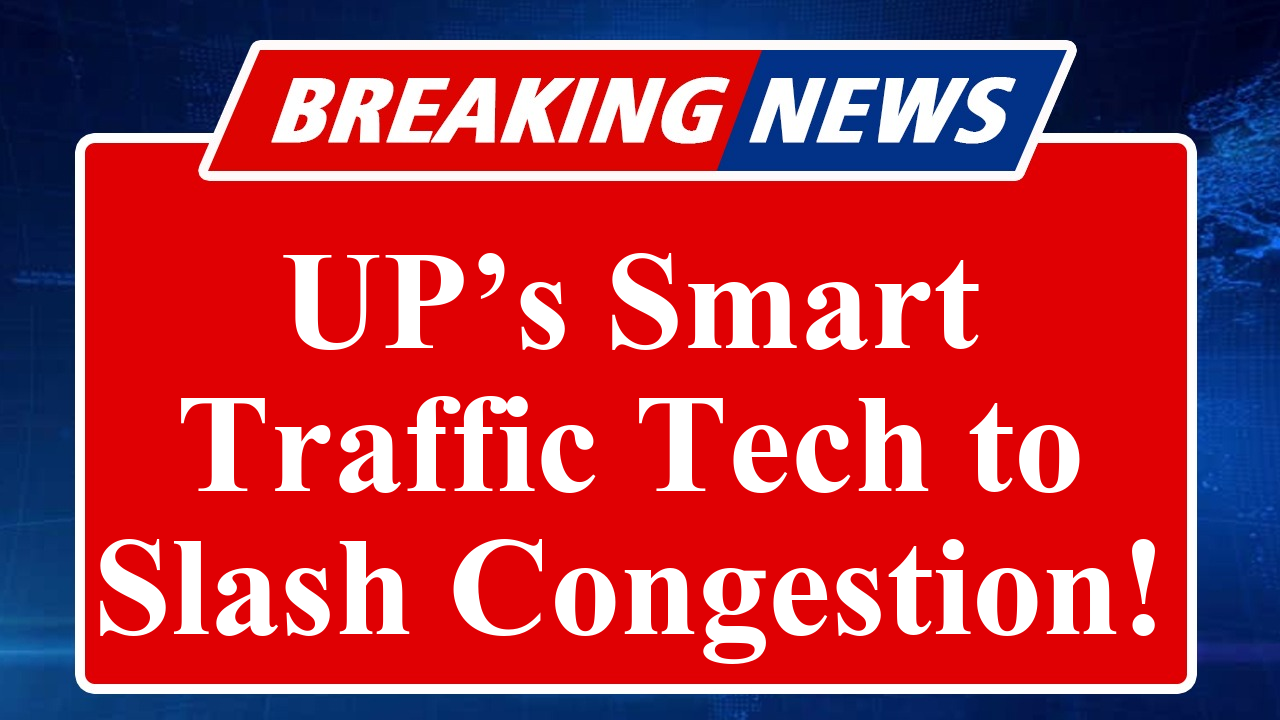Uttar Pradesh is adopting cutting-edge smart traffic technologies to tackle chronic congestion on its roads. From AI-powered traffic management systems to Swiss-inspired road enhancements, the state aims to streamline urban mobility, reduce travel times, and boost safety. These innovations align with India’s Smart Cities Mission, promising a smarter, more efficient future for commuters.
Uttar Pradesh Rolls Out Smart Traffic Solutions to Combat Congestion
Uttar Pradesh, one of India’s most populous states, is taking bold steps to address its escalating traffic congestion crisis with the integration of advanced smart traffic technologies. The state government has initiated multiple projects to modernize its transportation infrastructure, focusing on real-time data analytics, artificial intelligence (AI), and innovative road engineering to enhance urban mobility.
A cornerstone of this initiative is the deployment of Intelligent Traffic Management Systems (ITMS) across major cities like Lucknow, Kanpur, and Noida. These systems leverage AI technologies, including machine learning and computer vision, to analyze real-time traffic data from IoT-enabled sensors and cameras. By identifying congestion patterns and predicting bottlenecks, ITMS enables authorities to dynamically adjust traffic signal timings, reducing wait times at key junctions. For instance, adaptive traffic signal systems, inspired by successful models in Bengaluru, are being piloted to optimize vehicle flow during peak hours, potentially cutting travel times by up to 20%.
The state has also partnered with global innovators to enhance road infrastructure. Recent announcements highlight the adoption of Swiss technology to improve ride quality on expressways, ensuring smoother and safer travel for commuters. This involves advanced road surfacing techniques and smart sensors embedded in highways to monitor traffic density and road conditions in real time. Such measures aim to reduce wear-and-tear on vehicles while minimizing accident risks caused by poor road quality, a persistent issue during India’s monsoon season.
In alignment with India’s Smart Cities Mission, Uttar Pradesh is integrating connected vehicle technology to further streamline traffic. Vehicles equipped with sensors can share real-time data with traffic management centers, enabling dynamic route guidance for drivers to avoid congested zones. This technology, coupled with mobile apps providing live traffic updates, empowers commuters to make informed travel decisions, easing pressure on overburdened urban roads.
The state’s efforts also include congestion pricing pilots in high-traffic zones, drawing inspiration from global models like Singapore and Stockholm. By imposing charges during peak hours, authorities aim to discourage unnecessary private vehicle use and promote public transport. Cities like Pune and Ranchi have already seen success with similar Travel Demand Management (TDM) strategies, and UP is keen to replicate these results. Additionally, the government is exploring smart parking systems to curb illegal parking, a major contributor to urban gridlock.
Public transport is another focus area, with plans to equip buses with GPS tracking for real-time scheduling and route optimization. This builds on successful models in Mysore and Amritsar, where smart transport solutions have improved reliability and reduced commuter wait times. In UP, such initiatives are expected to encourage a shift from private vehicles to buses, easing road congestion and reducing vehicular emissions, which account for a significant portion of urban air pollution.
The economic impact of traffic congestion in India is staggering, with a 2018 Boston Consulting Group study estimating annual losses of over Rs 1.4 lakh crore in four major cities alone. Uttar Pradesh, with its rapidly urbanizing cities, faces similar challenges, exacerbated by a vehicle growth rate outpacing infrastructure development. The state’s investment in smart traffic solutions is a proactive response to this crisis, aiming to enhance productivity, reduce fuel wastage, and improve the quality of life for millions of commuters.
Stakeholder collaboration is critical to the success of these initiatives. The government is working closely with private tech firms, urban planners, and international agencies like the Japanese International Cooperation Agency (JICA) to implement best practices. However, challenges remain, including public resistance to congestion pricing and concerns over data privacy with IoT-enabled systems. To address these, authorities are emphasizing transparent communication and robust cybersecurity measures to build public trust.
As Uttar Pradesh continues to roll out these smart traffic solutions, the state is positioning itself as a leader in India’s urban mobility revolution. With a focus on technology-driven, sustainable transport systems, UP aims to create a blueprint for other Indian states grappling with similar congestion woes.
Disclaimer: This article is based on recent news, reports, and publicly available information regarding smart traffic initiatives in Uttar Pradesh. The data and projections are sourced from government announcements, industry studies, and media reports, including posts on X and web sources like indiaai.gov.in and timesofindia.indiatimes.com. Accuracy is subject to change as new information emerges.

